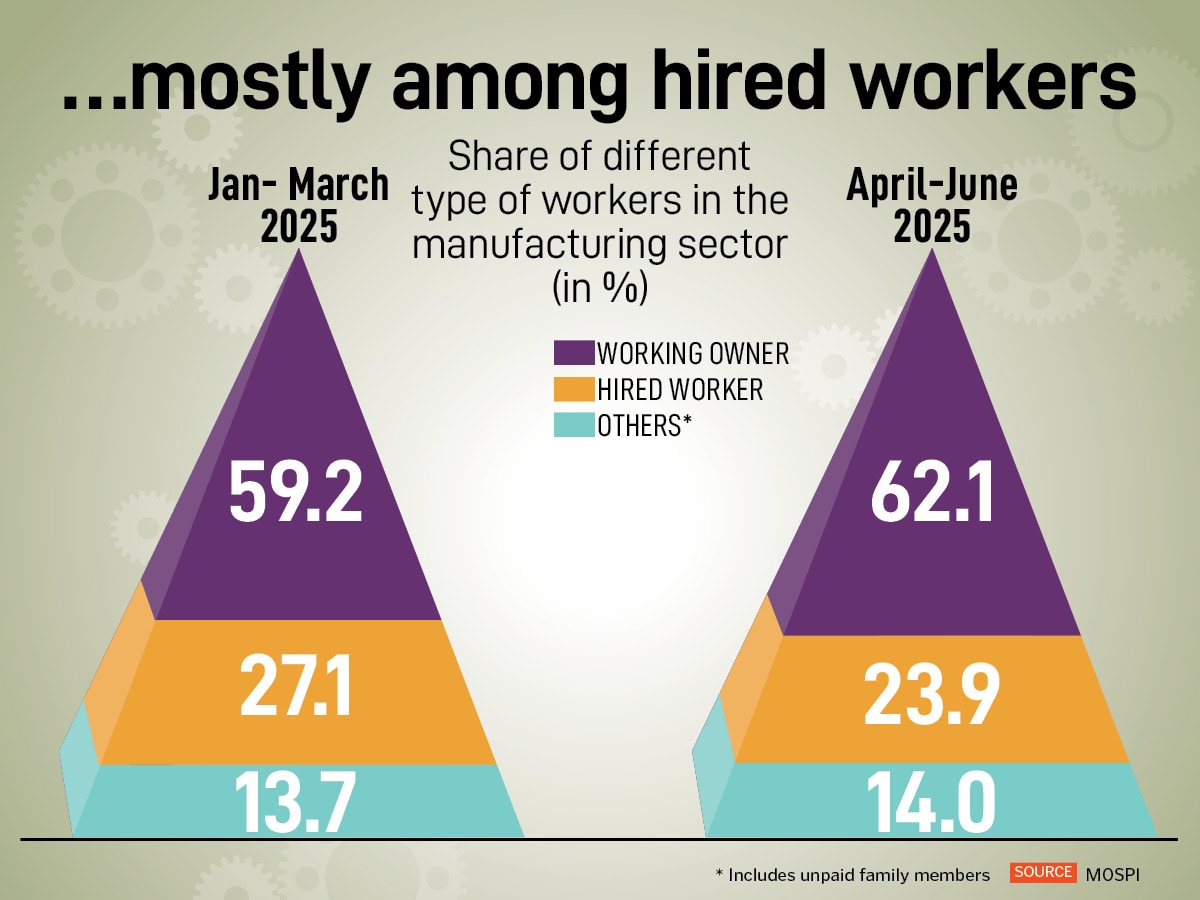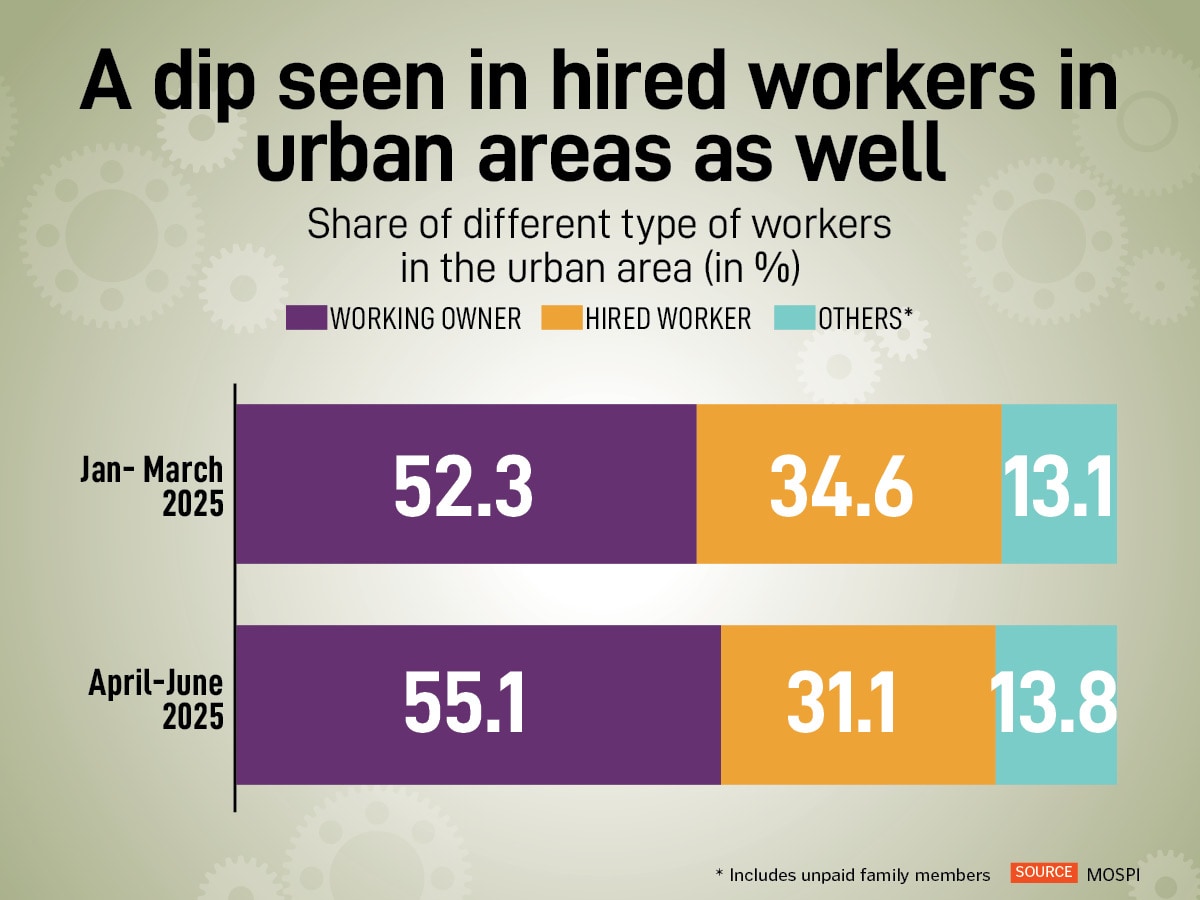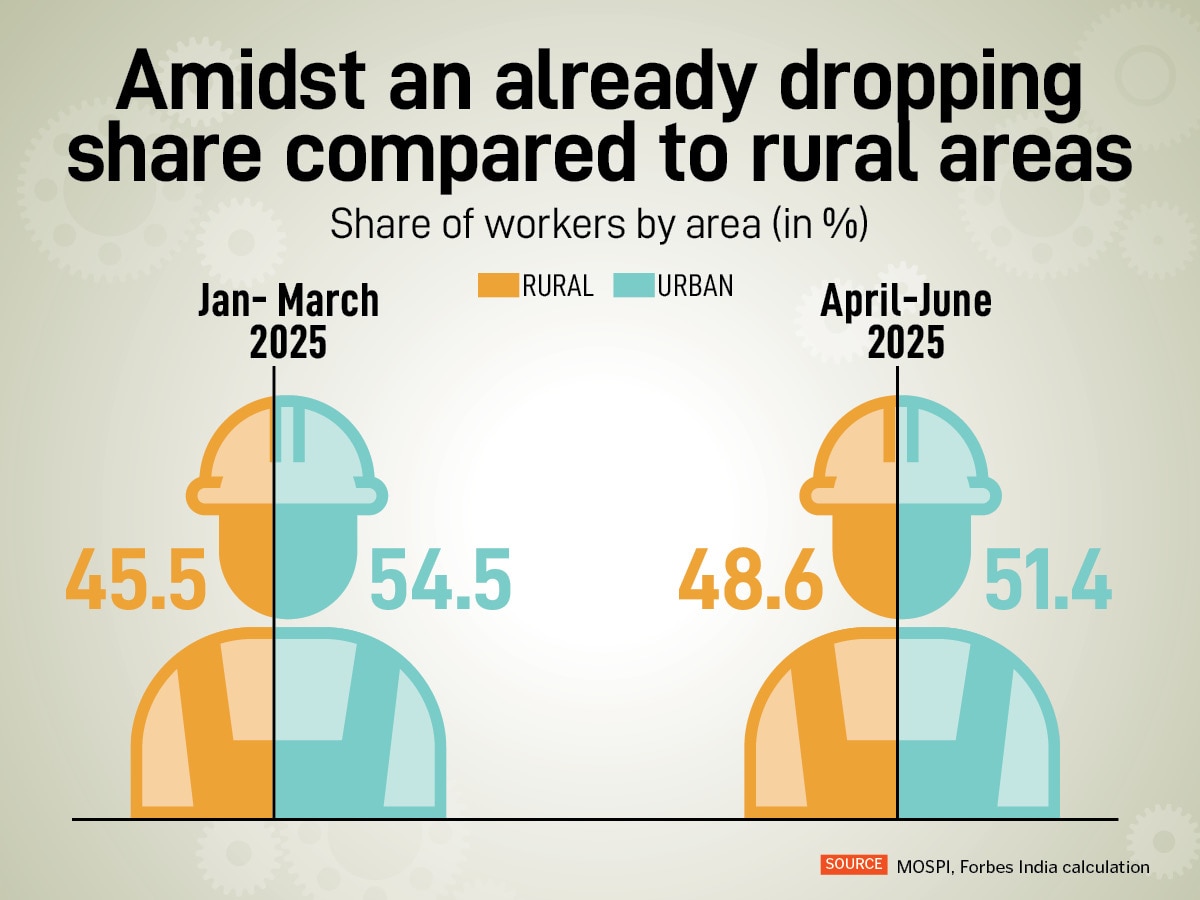Share of manufacturing workers in the unorganised workforce shrinks in Q1FY26
Workers employed in the sector declined by 9.3 percent to about 335,000 in the April-June 2025 quarter from 369,000 in the previous quarter


Manufacturing accounts for fewer jobs in an already-declining workforce of the unorganised sector, shows recently released government data. This is the first edition of the quarterly bulletin on Unincorporated Sector Enterprises by the National Statistics Office.

Workers employed in the manufacturing sector declined by 9.3 percent to about 335,000 in the April-June 2025 quarter from 369,000 in the previous quarter. And with this dip, the share of manufacturing workers in the total unorganised workforce has decreased from over 28 percent in January-March quarter to 26 percent in the next.
The share of the services sector, the main employer with more than a third of the unorganised sector’s workforce, has increased in the same period. A similar increase can be seen in the trade sector as well.
Manufacturing seems to be losing ground in a declining unorganised workforce; it has dipped by 2 percent to 128 million in the April-June 2025 quarter.

And even within the manufacturing sector, there is a dip in the share of hired workforce with a consequent rise in owners and unpaid family members. For instance, the share of hired workers in the manufacturing sector shrunk from 27 percent in the January-March quarter this year to about 24 percent in the next. The proportion of ‘working owners’ has, however, increased by 3 percentage points quarter-on-quarter.

Overall, enterprises in urban areas are less likely to have hired workers. More than half of the urban unorganised workforce are owners and about a third are hired workers. The contrast is more stark on the rural side, where owners comprise a larger share, over 65 percent, while hired workforce is less than a fifth of the total unorganised workforce.

The rural unorganised sector has seen an overall increase in its workforce, from 5.97 crore to 6.25 crore in the June 2025 quarter. The report suggests that this underscores the “rising role of unincorporated enterprises in rural economic activity”.
First Published: Sep 04, 2025, 17:39
Subscribe Now